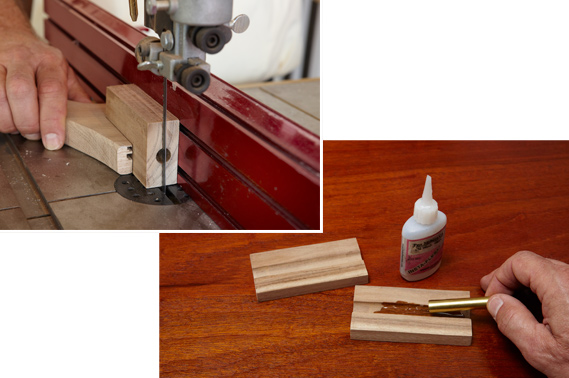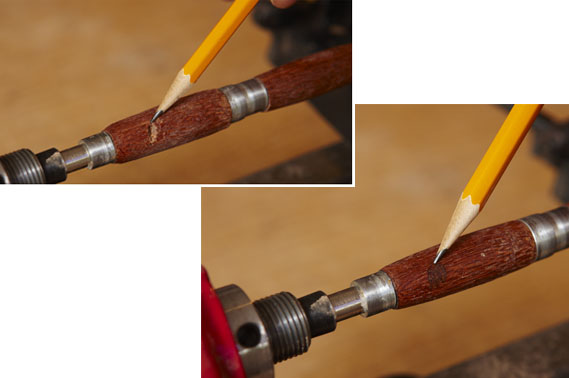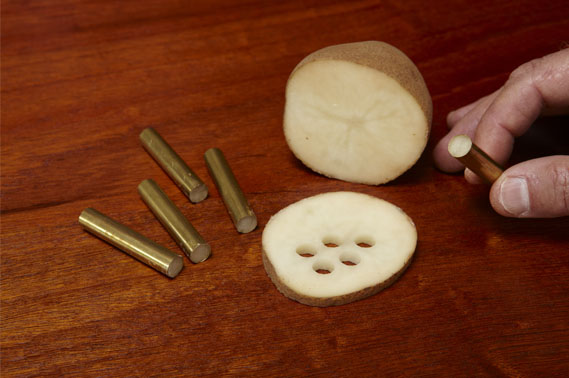3 Tricks to make glue work for you
3 Tricks to make glue work for you
1. Keeping glue in its place with this tidy tray
Minimize the mess – and frustration – when applying glue to pen tubes by using this super-simple glue tray. To make one, cut a ¾"-thick, 2"-wide, 4"-long piece of scrap wood. Then, drill a ⅜" hole lengthwise down the center of it. Next, use your bandsaw to cut the piece in half, cutting through the center of the hole. Voila! You have two trays with a “trough” for the glue. When you are ready to glue your pens, fill the trough with glue and then roll the tubes in it.

2. Fix defects with sawdust
Don’t let voids, cracks, and small tearouts ruin your blank. When you encounter these defects, keep turning the blank until it is just a little larger than the finished diameter. Then, remove the tool rest and sand the blank from the underside, making sure to catch the sanding dust with the sandpaper. Put some thin-viscosity cyanoacrylate (CA) glue in the void, and then pack it with the sanding dust you collected, wearing gloves to protect your fingers. (For larger defects, consider using small turning shavings.) Apply a coat of CA glue on top of the packed area and add more sanding dust if necessary. After the glue cures turn your blank down to the finished size.

3. Use a potato to keep glue in its place
Glue has a tendency to get on the inside of brass tubes when gluing them in blanks. That excess glue takes time to remove. And if not removed, the glue will create problems at assembly time. To get ahead of the game, seal tube ends with potato plugs. Just cut a ¼" slice of raw potato and press each end of your tube into it. The plugs will come out when trimming the blanks with a barrel trimmer. If using cyanoacrylate (instant) glue, wipe down the outside of the tube before gluing as the potato’s moisture will speed the curing time.




